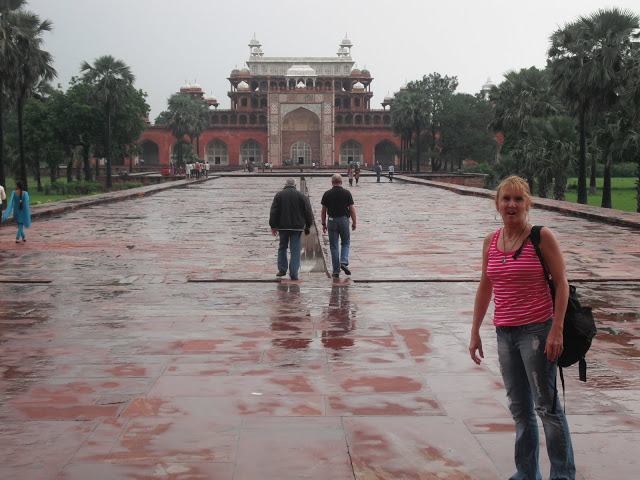Short Introduction about Agra
- Agra - The City of Love
- Agra - The Former capital of Hindustan (India)
- Agra - The Loving city of Mughal Empire
- Agra - The City of Fascinating Attractions
- Agra - Most searching destination by lovers and newly married couples.
Name of City
|
Agra
|
Old Name
|
Previously called as Agrevaṇa (the border of the Forest) Mentioned in the epic Mahabharata.
|
District
|
Agra
|
State
|
Uttar Pradesh
|
Country
|
India
|
Distance from Airport
|
12.5 km from the city center Agra (Agra Airport)
|
Agra Famous for
|
Taj Mahal, Fatehpur Sikri, Akbar's Tomb (Sikandra), Agra Fort, I'timad-Ud-Daulah (Baby Taj), Ram Bagh, Mankameshwar Temple, Jama Masjid, Swami Bagh Samadhi, Indrabhan Girls' Inter College, Chini ka Rauza, Guru ka Tal, The Cathedral of the Immaculate Conception, Mughal Heritage Walk, Mariam's Tomb, Keetham Lake, Mehtab Bagh, Agra ke Pethe (The name of Agra sweet), Stone statue of Agra
|
Agra
Two
great Mughal monarchs, Akbar and Shah Jahan, transformed the little village of Agra Agra Agra
If you are in Agra so must visit here:-
 |
Taj Mahal - Dream destination for Lovers |
TAJ MAHAL
Little needs to be said about this architectural wonder which is always the soul raison-de-etre for every tourist's visit to Agra. Built by Shah Jahan, the Taj is a white marble memorial to his beautiful wife Mumtaz Mahal. This monument took 22 years to be completed and was designed, and planned by Persian architect Ustad Isa. Apart from its stunning design balance and perfect symmetry, the Taj is also noted particularly for its elegant domes, intricately carved screens and some of the best inlay work ever seen.
 |
Majestic View of the Taj Mahal with River Yamuna (Behind Taj) |
SIKANDRA
This beautifully maintained monument is where EMPEROR AKBAR was buried. It is a very low profile monument but it has one of the most awe – inspiring tombs. It is surreal how one of the greatest emperors has been put to rest. The manicured lawns has spotted and other varieties of deer roaming in them. Named after the Afghan ruler Sikander Lodi, Sikandra is the final resting place of Emperor Akbar. The Emperor began the construction of his own garden mausoleum during his lifetime. However, the construction was completed by his son Jahangir in 1613. An impressive marble - inlaid gateway leads to the spacious four - tiered monument which is crowned by a white marble cenotaph and screen. What is interesting is that the structure imbibes the best of Hindu, Christian, Islamic, Buddhist, Jain motifs, signifying the new religion started by Akbar – the DEEN E ILAHI.
 |
Sikandra |
AGRA FORT
The red sandstone structure is surrounded by chahar-bagh, a four-square formal garden. Built by the famed Mughal emperor Akbar in 1565 AD, the fort is predominantly of red sandstone. Ensconced within is the picture perfect Pearl Mosque, which is a major tourist attraction. It lies on the bend of the river Yamuna, almost in the heart of the town. Akbar built it as his citadel over the years 1563-73 in the finest architectural style. It has imposing gates and walls of red sandstone and a moat.
 |
Agra Fort |
Baby Taj
After Agra Fort we will visit BABY TAJ or the ITMAD-UD-ULLAH – The interiors of which are considered better than the Taj. One of the most beautiful Mughal tombs, Itmad-Ud-Daulah's Tomb was built by Nur Jahan, the Empress of Jehangir for her father in 1628.
 |
Baby Taj Agra - The interiors of which are considered better than the Taj |
The tomb is a resting place of the powerful personality in Mughal Court, Itmad-Ud-Daulah, whose life is very interesting. Formerly a very poor Persian merchant then named Mirza Ghiyas or Ghiyas Beg he became a minister and a trusted treasure in Akbar's court. After Akbar's death in 1605, his son Jahangir rose into power. Jahangir made Ghiyas Beg his chief minister and honored him with the title of Itmad-Ud-Daulah, the Pillar of State. Later, Jahangir met a beautiful daughter of Ghiyas Beg named Mehr-Un-Nissa and married her. Mehr-Un-Nissa soon played a significant role in the Jahangir's court and was called Nur Mahal, the light pf the Place. Owing to her influence, her father and brother were granted with privileges in the court. When Ghiyas beg (Itmad-Un-Daulah) dies in 1622, Nur Mahal decided to build a mausoleum for him. Queen Mumtaz Mahal or the lady of the Taj was also from this prevailing family. The mausoleum is entirely made of white marble and graced with intricate decoration of inlay work, and marble-screen work belonging to the Islamic style. With its tranquil, small garden on the bank of Yamuna River, the tomb stands impressively elegant from a distance.
 |
Interiors of Baby Taj which are considered better than the Taj Mahal |
Thank You for reading this post.
If you want to add or suggest more information about Agra, Taj Mahal or other destinations in Agra OR interested to publish your India travel experiences, Pictures, photographs and article on this blog so please call/whatsapp @ +91 8287455143
Please share this post with your friends and in your social network. (Below are share buttons)
If you want to add or suggest more information about Agra, Taj Mahal or other destinations in Agra OR interested to publish your India travel experiences, Pictures, photographs and article on this blog so please call/whatsapp @ +91 8287455143
Please share this post with your friends and in your social network. (Below are share buttons)
Thank You so much
